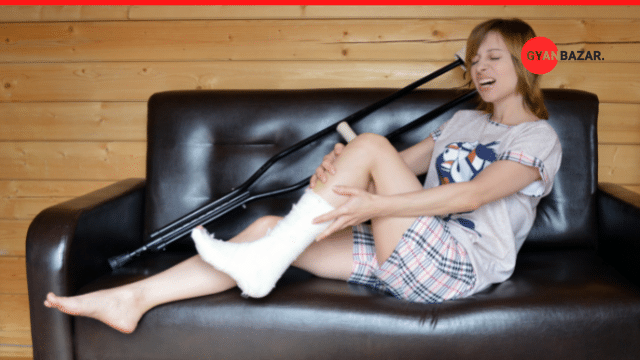Bones are made of a strong mineral called calcium. When bones are broken, the mineral is broken down and can cause pain. There are several different types of bones, and each one has different ways that it can break. In this blog post, we will discuss the different types of bones, their functions, and the types of injuries that can result in their break.
We will also provide tips on how to treat broken bones, and how to prevent them from occurring in the first place. By learning about the different types of bones, you will be able to identify the type of injury you are experiencing and find the best way to treat it.
Types of broken bones
Broken bones can come in many shapes and sizes, but the most common types are those that happen in the lower extremities. The most common places for bones to break are the thighbone (femur), the lower leg bone (tibia), and the lower arm bone ( radius).
The most common type of break is the femur, which is the thighbone. This is usually the result of a fall from a height or a sudden twisting or compression force on the lower extremities.
The next most common type of break is the tibia, which is the lower leg bone. This can happen when someone steps on a nail, trips on a rock or falls from a height onto their leg.
The third most common type of break is the radius, which is the lower arm bone. This can happen when someone falls from a height, hits their head on a hard surface, or is hit in the arm with a baseball or a tennis ball.
Injuries caused by broken bones can be very painful and can take weeks, months, or even years to heal. The most important thing that you can do to help speed up the healing process is to take the proper antibiotics and make sure that the bone is kept as still as possible while it heals.
Treatment of broken bones
Broken bones can be classified into two types: simple fractures and compound fractures.
Simple fractures are fractures that don’t require surgery. These are fractures that are in the lower leg, the arm, the hand, the foot, and the tibia (the larger of the two bones in the leg). These fractures can be treated with rest and ice and may require a splint or cast.
Compound fractures are fractures that require surgery. These are fractures that are in the upper leg, the arm, the hand, the foot, and the tibia. These fractures can be treated with surgery, with or without a splint or cast.
Common symptoms of broken bones
Broken bones can be caused by a lot of different things and can occur in many different ways. In this article, we will discuss the different types of broken bones and their common symptoms.
There are four main types of broken bones – femur, tibia, fibula, and clavicle. Each bone has a different way of healing and each has its symptoms.
Femur:
The femur is the largest and most common bone in the body and it is in the upper leg. When it is broken, the bone can go all the way through the skin and muscle. This type of bone is usually the hardest to heal and the most severe of all bone fractures.
Tibia:
The tibia is the second most common bone in the body and it is in the lower leg. When it is broken, the bone can go all the way through the skin and muscle. This type of bone is usually the easiest to heal and the least severe of all bone fractures.
Fibula:
The fibula is the third most common bone in the body and it is in the leg below the tibia. When it is broken, the bone can go all the way through the skin and muscle. This type of bone is usually the easiest to heal and the least severe of all bone fractures.
Clavicle:
The clavicle is the fourth most common bone in the body and it is in the collarbone. When it is broken, the bone can go all the way through the skin and muscle. This type of bone is usually the easiest to heal and the least severe of all bone fractures.
Each bone has its own set of symptoms and broken bones can cause a lot of different symptoms. The most common symptoms of a broken bone are pain, swelling, and bruising. However, broken bones can also cause a loss of mobility, a change in the way you walk, and a change in the way you chew. If you are experiencing any of these symptoms, it is important to see a doctor as soon as possible.
How to tell if a bone is broken
Broken bones can occur in many different ways and can be caused by several things. In this article, we will discuss the different types of broken bones and how to tell if they are broken.
There are three main types of broken bones:
- Fractures: When the bone is broken, it can also be fractured. This means that the bone has been broken into several pieces.
- Compound fractures: These fractures involve two or more bones and can be more serious.
- simple fractures: These fractures are the most common and involve just one bone being broken.
To determine if a bone is broken, you first need to determine the type of fracture. Once you know that, you can determine whether or not the bone is broken.
Fractures:
To determine if a fracture has occurred, you will need to look for signs of displacement, tenderness, and bruising. If any of these signs are present, then the fracture has likely occurred.
Compound fractures:
To determine if a compound fracture has occurred, you will need to look for signs of displacement, tenderness, and bruising. If any of these signs are present, then the fracture has likely occurred.
simple fractures:
To determine if a simple fracture has occurred, you will need to look for signs of displacement, tenderness, and bruising. If any of these signs are present, then the fracture has likely occurred.
How to treat a broken bone
Broken bones can be treated in a variety of ways depending on the severity. Minor fractures can usually be treated at home, while more severe fractures will likely require hospitalization.
Minor fractures can usually be treated at home by applying a bandage and resting. Severe fractures will likely require hospitalization for surgery to fix the bone. Surgery may also be required to stabilize the broken bones in case they move during healing.
Prevention of broken bones
Broken bones can be classified into two main groups, displaced bones, and non-displaced bones.
Displaced bones:
These bones are displaced from their natural position. This can be caused by several factors such as an accident, a fall, or a muscle spasm.
Non-displaced bones:
These bones are not displaced from their natural position. This can be caused by several factors such as osteoporosis, a disease, or a fracture that does not involve displacement.
The most important thing to remember when it comes to preventing broken bones is to keep yourself as safe as possible. If you are involved in an accident, try to get as much information as possible about what happened. If you are injured, seek medical attention as soon as possible.
We hope you enjoyed our blog post about the different types of broken bones. This information is important for anyone who is injured and needs to know what to do when they are in the hospital or at home. By reading this post, you will have a better understanding of your broken bone and what to expect from the injury. Thank you for reading, and we hope that this information was helpful.

